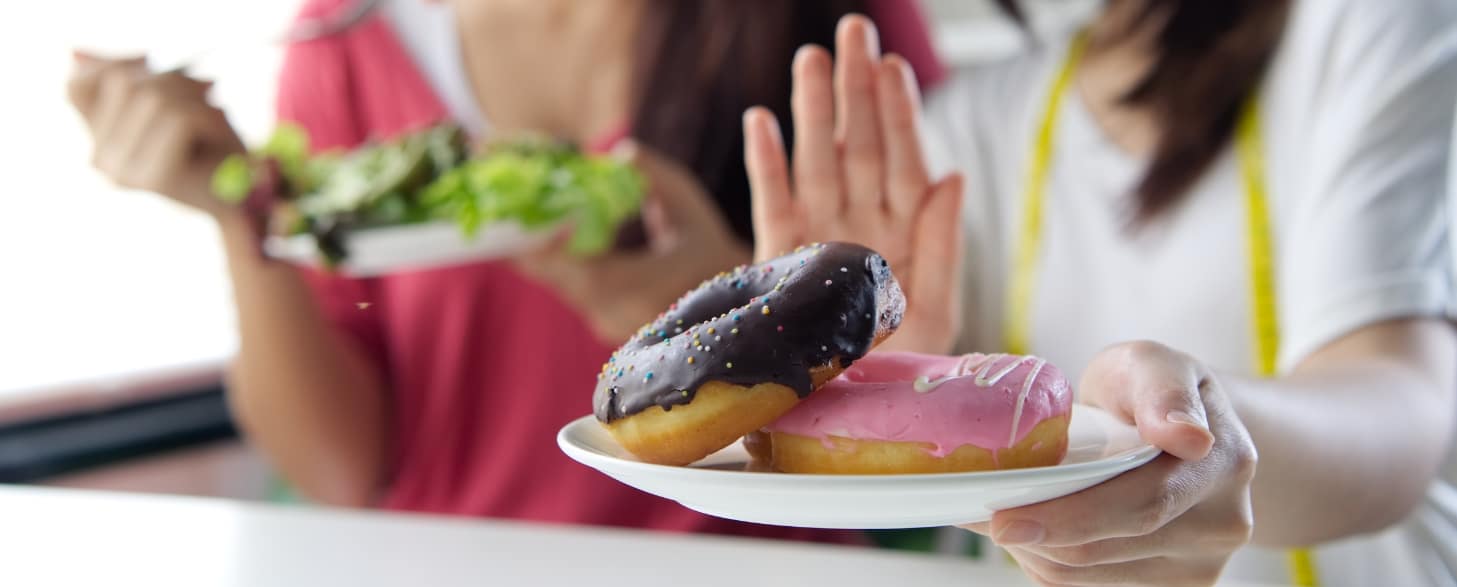Foods That Stain Your Teeth
San Antonio, TX

Maintaining a bright, healthy smile is a top priority for many. While diligent brushing and flossing form the foundation of good oral hygiene, certain foods and drinks can sabotage your efforts. It leaves behind unwanted stains. Understanding these culprits and implementing preventive measures can make a significant difference in keeping your smile sparkling. In this informative blog, we’ll focus on the potential foods that stain your teeth. Additionally, we’ll provide an insight into the strategic ways in which you can prevent it.
#1: Tea
Tea, a warm and comforting beverage enjoyed worldwide, can have a surprising impact on your teeth. While black tea offers a robust flavor, it also contains tannins, the culprits behind those pesky tea stains. These astringent compounds bind to tooth enamel, leaving behind a yellow or brownish film.
Tannins are naturally occurring plant compounds found in high concentrations in black tea. They are responsible for the tea’s astringent taste and deep color. Unfortunately, tannins also have a strong affinity for tooth enamel, the hard outer layer of your teeth. This affinity leads to the formation of a thin film on the teeth, which can stain them over time. Green tea, while generally considered better for your teeth, still contains some tannins, so staining is a possibility, albeit less likely.
#2: Sauces
While they may add a burst of flavor to your favorite dishes, vibrant sauces can also leave an unwanted mark on your teeth. Beyond the visual appeal on your plate, deeply colored condiments like soy sauce, balsamic vinegar, and tomato-based sauces harbor staining potential. This effect is a result of the twofold punch they pack:
- Pigments: These are the colorful compounds that give the sauce its distinctive hue. Unfortunately, these same pigments can also adhere to the tooth enamel, leaving behind a stain. The darker the color, the greater the staining potential.
- Acidity: Many sauces, especially those containing tomatoes or vinegar, are acidic. This acidity can slightly weaken the enamel. As a result, this makes it more susceptible to staining from the pigments and other coloring agents in the sauce.
#3: Sports Drinks
While sports drinks are widely marketed to promote hydration and athletic performance, they often harbor a less-than-ideal secret: a potent cocktail of ingredients that can negatively impact your oral health. Many sports drinks are laden with citric acid, a common additive that gives them their tangy taste. However, this very element poses a threat to your tooth enamel. The acidic nature of these drinks (often having a pH below the critical level of 5.5) can weaken and erode the enamel.
Beyond the acidic concerns, sports drinks frequently come packed with high amounts of sugar. This sugar feeds the growth of harmful bacteria in your mouth. As a result, it leads to an increased risk of cavities and tooth decay. Additionally, the colored ingredients in some sports drinks can stain your teeth, leaving an undesirable discoloration.
#4: Wine
While a glass of wine can be a delightful accompaniment to a meal or a relaxing way to unwind, its impact on your pearly whites might leave you wanting more. Red wine’s notorious ability to stain teeth stems from a group of compounds called chromogens. These color-giving molecules, naturally present in red wine grapes, bind with proteins in your saliva. This union creates pigmented complexes that readily adhere to the enamel. This eventually results in a noticeable red or purple tint.
#5: Fruits and Berries
While nature paints fruits and berries with vibrant colors, these same pigments can leave their mark on our teeth. Don’t be discouraged, though! These fruits are powerhouses of essential vitamins and antioxidants, crucial for maintaining good health. Here’s a deeper dive into the world of colorful fruits and how to navigate their potential for staining:
- Deeply colored berries: Blueberries, blackberries, cherries, pomegranates, and cranberries are all high in chromogens. They’re natural pigments that readily bind to the enamel on your teeth. These, alongside tannins found in some berries, can cause a temporary but noticeable discoloration.
- Dark-colored fruits: Similar to berries, fruits like acai and dark grapes can also contribute to staining.
#6: Soda, Cola, and Other Carbonated Drinks
Soda and cola, while seemingly innocuous beverages pose a significant threat to the health and appearance of your teeth. Here’s why they deserve a limited role, if any, in your diet:
- Fuel for cavity-causing bacteria: The high sugar content in sodas and colas acts as a feast for the harmful bacteria naturally present in your mouth. These bacteria thrive on sugar, producing acids as a byproduct.
- Acidic Attack: These acids erode tooth enamel, the hard outer layer protecting your teeth. This weakening of the enamel leaves your teeth vulnerable to decay, leading to cavities and potential toothaches.
- Acidic environment: Even beyond the sugar content, sodas and colas are inherently acidic due to the presence of carbonic acid. This acidity further contributes to the erosion of tooth enamel.
- Staining susceptibility: Weakened enamel is more prone to staining from other sources, such as coffee, tea, or even berries. This can lead to discoloration and a dull appearance of your teeth.
#7: Candy and Sweets
While the sugary rush of candy and sweets can be tempting, it’s important to be aware of the potential consequences for your oral health. These delightful treats come with a hidden cost that can affect the beauty and health of your smile.
- The Sugar Trap: The primary culprit behind the negative effects of candy and sweets is sugar. When sugar lingers in your mouth, it becomes a feeding ground for harmful bacteria.
- Enamel Erosion: This weakens your teeth, making them more susceptible to cavities & sensitivity. The weakened enamel allows bacteria to invade deeper layers of your teeth, leading to the formation of cavities, commonly known as holes. As the enamel wears down, the underlying dentin layer, which contains microscopic tubes leading to the tooth’s nerves, becomes exposed. This can cause sharp pain or discomfort when exposed to hot, cold, or sweet foods and drinks.
Preventing Tooth Stains
Maintaining a radiant smile requires more than just brushing your teeth occasionally. To effectively combat tooth stains and achieve long-lasting results, a multi-pronged approach is key. Here are some actionable steps you can incorporate into your daily routine:
Cultivate a Flawless Oral Hygiene Routine
- Brushing: Brushing your teeth twice a day for two minutes is the cornerstone of stain prevention. Use a soft-bristled toothbrush and fluoride toothpaste to gently remove plaque and food particles that can harbor stain-causing bacteria.
- Flossing: Flossing at least once a day is essential for removing food debris and plaque from between your teeth, where brushing alone can’t reach. This helps prevent the build-up of stain-causing bacteria in these hard-to-reach areas.
- Consider additional tools: Explore using a tongue scraper to remove bacteria that can contribute to discoloration and bad breath. Additionally, a water flosser can be a helpful tool for some individuals to remove food particles and plaque more effectively.
Rinse Regularly
- Rinse after meals: Rinsing your mouth with water after consuming food or beverages. Doing so helps wash away lingering food particles and pigments before they have a chance to adhere to your teeth.
- Consider a fluoride rinse: Using a fluoride rinse after brushing can provide additional benefits. This involves strengthening tooth enamel and reducing the risk of cavities, which can contribute to tooth discoloration.
Be Mindful of Your Diet
- Limit staining foods and drinks: While complete elimination isn’t necessary, moderation is key when it comes to consuming beverages and foods known to stain teeth. These include coffee, tea, red wine, sodas, dark berries, and soy sauce.
- Enjoy staining foods strategically: If you indulge in something staining, consume it with a meal rather than on its own. Food can help buffer the staining effects on your teeth.
- Choose wisely: Opt for lighter-colored alternatives whenever possible. For example, choose green tea over black tea or white wine over red wine.
Stay Hydrated
Water not only helps keep you hydrated but also plays a vital role in washing away food particles. Also, water helps in promoting saliva production. Saliva acts as a natural cleanser, washing away debris and neutralizing acids in your mouth that can contribute to staining.
Schedule Regular Dental Visits
Visiting your dentist for regular checkups and cleanings is crucial for maintaining oral health and preventing tooth stains. Professional cleanings can remove surface stains that brushing and flossing alone cannot. This eventually results in brighter and healthier teeth.
Maintaining a healthy smile requires a holistic approach. While certain foods and drinks can contribute to staining, by implementing preventive measures and prioritizing good oral hygiene, you can keep your smile bright and confident. Remember, a dazzling smile is more than just aesthetics; it’s a reflection of your overall well-being.






